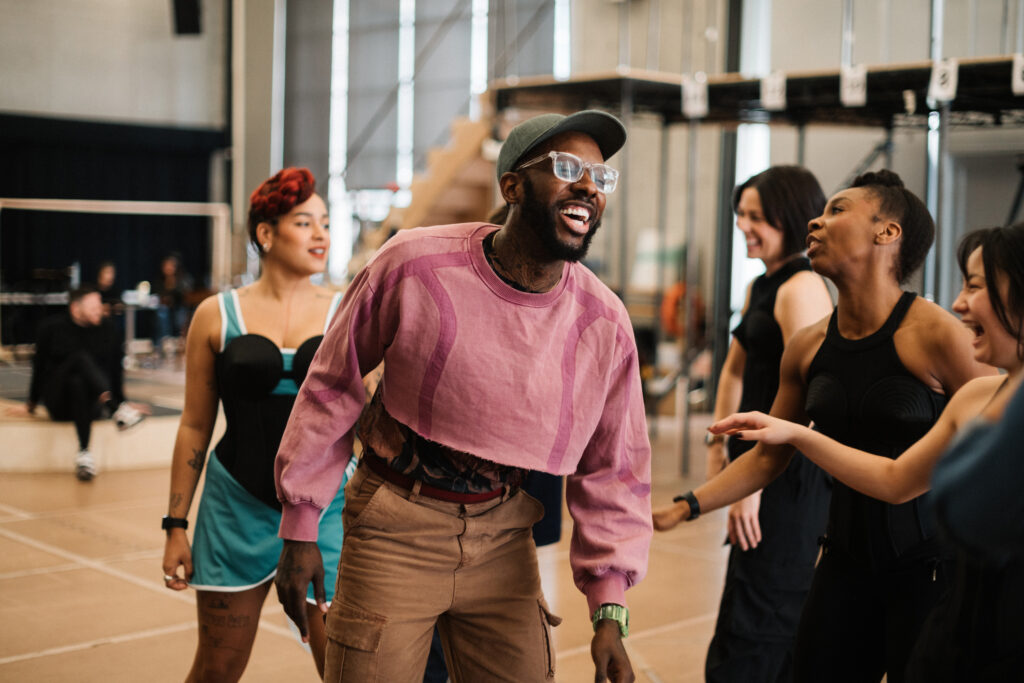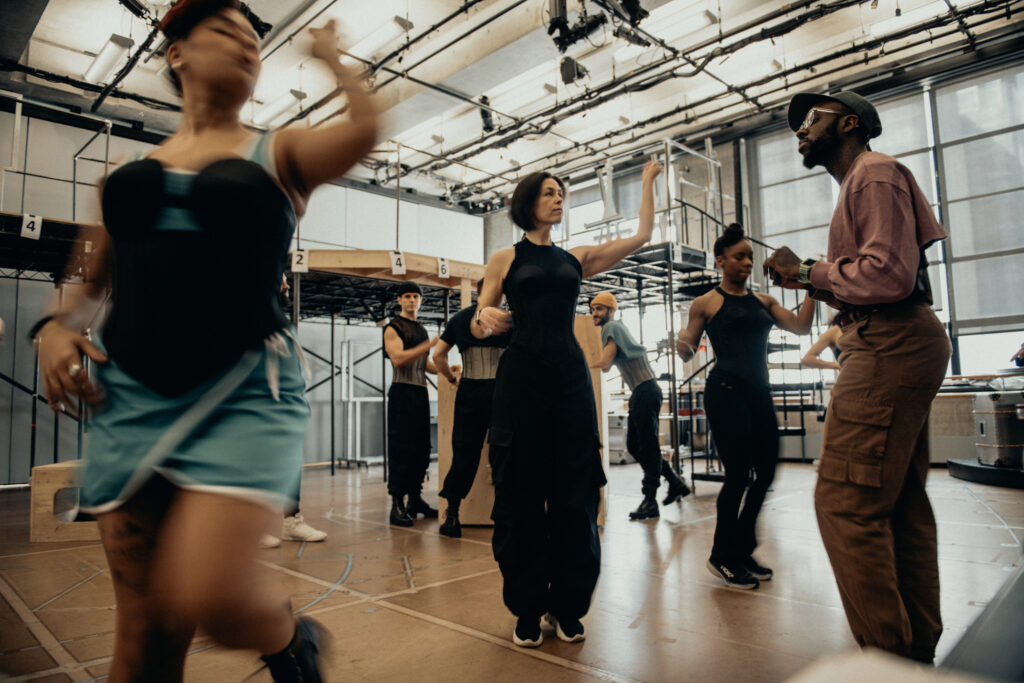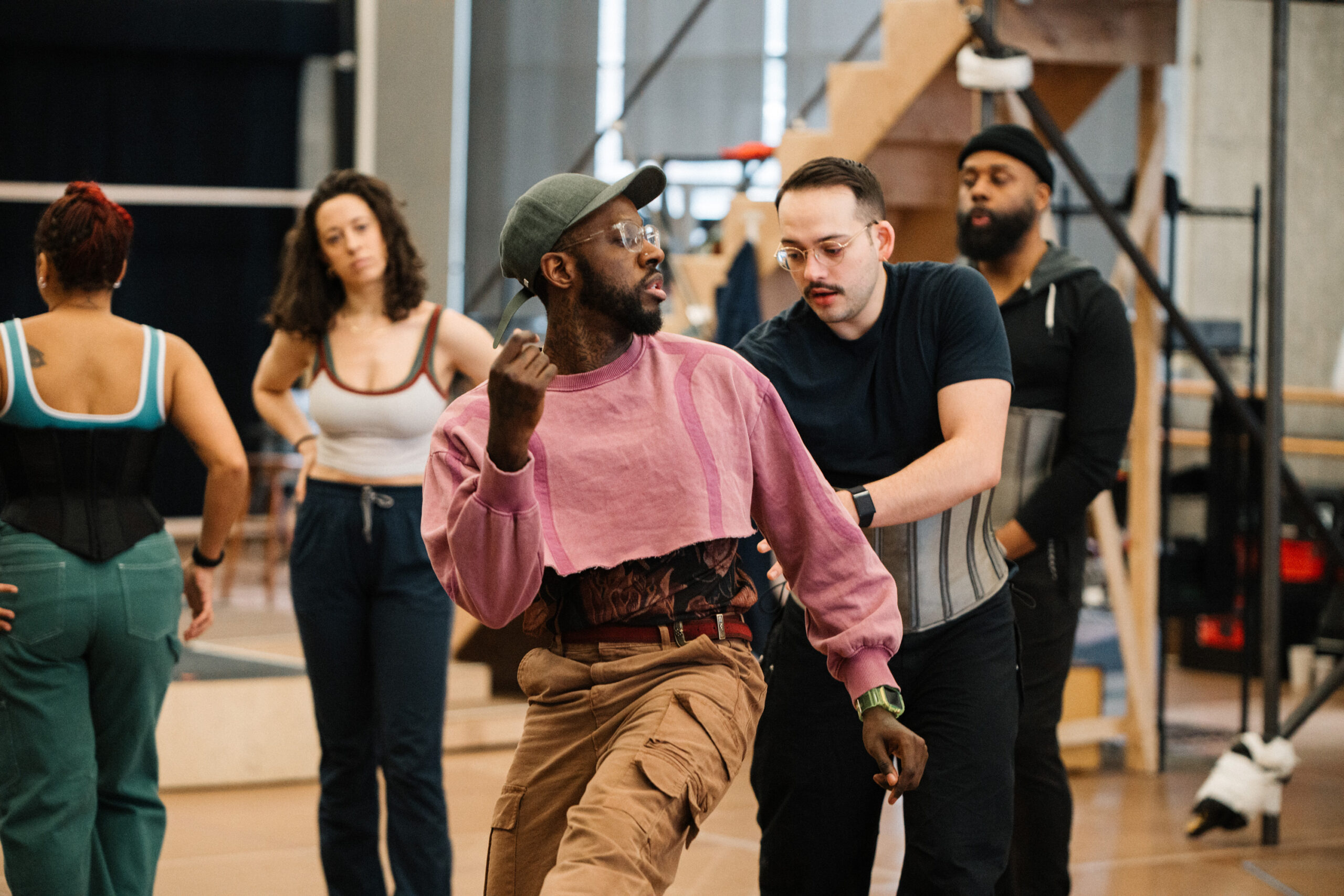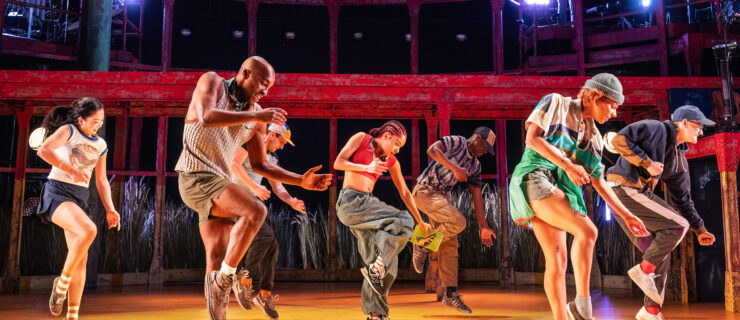Raja Feather Kelly and Rachel Chavkin on Lempicka the Show and Lempicka the Artist
What happens when a theater-loving choreographer and a dance-loving director work together on a musical?
Broadway gets an answer on March 19, when Lempicka (pronounced lem-PEEK-a), the first collaboration between choreographer Raja Feather Kelly and director Rachel Chavkin, begins previews at the Longacre Theatre. In college, he majored in poetry as well as dance, and she did “tons” of movement work. (And this spring he makes his off-Broadway playwriting debut at Soho Rep with The Fires, which he’s also directing.) Their experimental mindset and overlapping skills were first applied to the sprawling musical at its Williamstown Theatre Festival premiere, in 2018, and then again in 2022, at La Jolla Playhouse, earning enough applause to get them this Broadway outing.
Written by playwright Carson Kreitzer and composer Matt Gould, the show is inspired by the life of the painter Tamara de Lempicka, following its plucky heroine as she and her husband, a Polish aristocrat, flee the Russian Revolution and land in the tumult of 1920s Paris. She pushes her way into the vibrant Parisian art scene and forges a dynamic, Deco-flavored painting style and a new identity as an unapologetic lover of women.
On a bitingly cold February day, I watch Kelly, wearing his omnipresent cap and mismatched socks (left foot, lipstick red; right foot, neon yellow), rehearsing the ensemble in a busy, surprisingly Broadway-style production number in which Lempicka arrives in Paris. As Chavkin works with the principals in another studio, Kelly warms this room with his genial, good-humored vibe—he sometimes stops a sequence by waving a little red flag, a prop from his appearance in the Brooklyn-based comedy game show “Why Are You Single?”—and the rehearsal dissolves into jokes and laughter at regular intervals. (“Always the case,” he will tell me afterwards. “It’s about developing trust.”)

But there’s no doubting the rigor and penetration of his eye as he asks a dancer with a paintbrush to tackle his easel with “more velocity,” urges a couple to make a lift “sharp,” and encourages a leg into a clearer diagonal as the bustling number evokes kaleidoscopic images of the City of Light.
Later, in separate interviews, Kelly and Chavkin talk about Lempicka the show, Lempicka the artist—Chavkin knows many audiences likely won’t recognize Lempicka’s name, but suspects they will recognize her art—and their own collaboration on the musical. At times, they’re like he-said, she-said accounts of the same happy marriage. Below are a few excerpts from those conversations, edited for length and clarity.
On Lempicka’s Paintings
Kelly: There is so much movement—the way that curves move forward and backward, how diagonals are made in the body. And I think any dance person could see the épaulement in the paintings. I told them [Chavkin, Kreitzer, and Gould] that épaulement is the central movement language to begin any choreography for this work.
Chavkin: He explained to us what “épaulement” meant, and it was, “Oh, my god, that’s it—we were meant for you, and you were meant for us!”
On Storytelling With the Body
Kelly: I’m a postmodernist, and I am a contemporary dancer. I have to use everything I’ve learned to find a new language—I have to use postmodernism, I have to use lyrical, I have to use jazz. And I’m always going to tell a story, no matter what.
Chavkin: When I first encountered [the theatrical training technique] the Viewpoints in college, I was like, “Oh! I get how to do this!” I get that story is communicated through the body, through the physical state of the performer, through the physical state of the stage, and tension and line—all of the things that are absolutely principles of dance but that are also principles of staging.

On Working Together
Kelly: What’s exciting for me is that now, in 2024, she really does trust me. We’ve been doing it for almost eight years, and I think she trusts my understanding of the show. I tend to take care of the ensemble, and she leaves me to do that. Then we come together, and we note each other. Sometimes I’m offering her behavior for scenes, because I love for it to blend—so that the show doesn’t go from scene to dance. So that the whole show is alive with the same behavior. It can’t happen unless we’re working both in tandem and also separately, because we might have a different point of view on something. I’m certainly not a choreographer that just makes dances.
Chavkin: There’s a dance that every single director-choreographer team does once they get to know each other. Raja and I had the necessary luxury of many years and multiple incarnations of this project to figure out whose territory is whose. What’s been so exciting and so helpful is I tend to think in large movement of bodies and energy in the space—where do we need chaos, where does it need to be more stable, et cetera, et cetera. And Raja is so exquisite on human specificity and detail. It’s a big-picture/intimate-picture kind of dialogue between us. He gives it more shape, more line, further articulation. It’s so satisfying when you meet someone who can pick up what you’re putting down.




